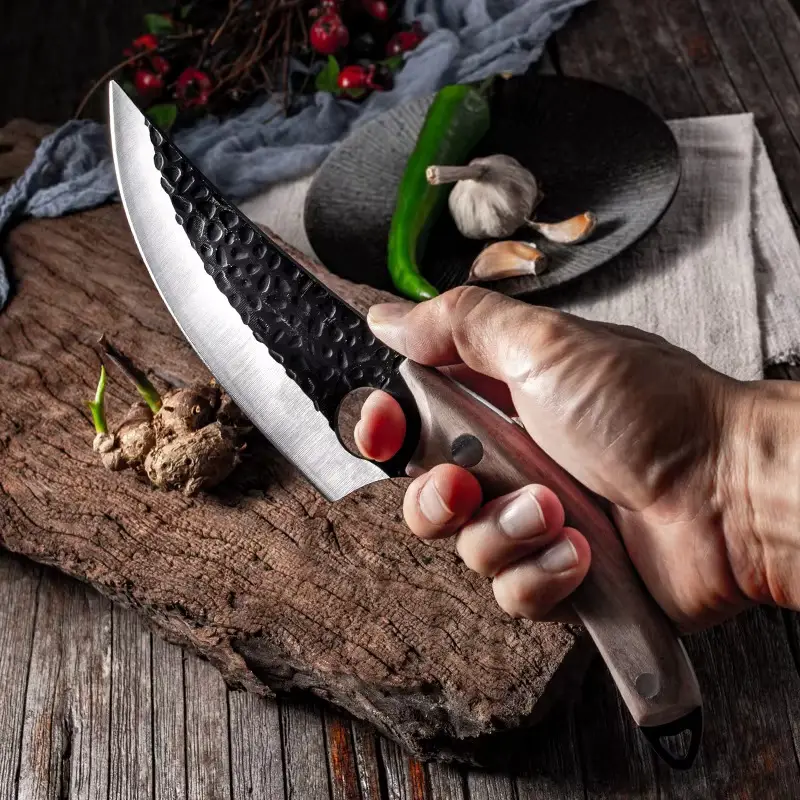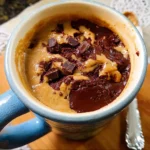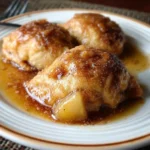In the world of confectionery, where creativity meets taste, the rose buttercream frosting stands as a testament to elegance and romance. This delicately flavored frosting transforms ordinary desserts into extraordinary culinary experiences, perfect for weddings, anniversaries, or any special occasion that calls for a touch of sophistication. In this article, we will delve into the art of making rose buttercream frosting, offering a comprehensive guide complete with ingredients, instructions, nutritional facts, serving suggestions, additional tips, and answers to frequently asked questions.
Introduction
Buttercream frosting is a classic choice for cakes and cupcakes, known for its creamy texture and versatility in flavors. Among the myriad of flavors, rose buttercream holds a special place for its unique aroma and subtle floral notes. This frosting not only adds an aesthetic appeal to desserts but also enhances their flavor profile, making each bite a delightful experience. Whether you’re a seasoned baker or a novice, rose buttercream can elevate your dessert game, leaving a lasting impression on anyone who tastes it.
Ingredients
To create this enchanting rose buttercream frosting, you’ll need the following ingredients:
- 1 cup (2 sticks) unsalted butter, softened
- 4 cups powdered sugar, sifted
- 1/4 cup heavy cream
- 1 teaspoon pure vanilla extract
- 2 teaspoons rose water
- A pinch of salt
- Pink food coloring (optional)
These ingredients come together to form a luscious, floral buttercream that complements a variety of baked goods.
Instructions
Follow these step-by-step instructions to whip up a batch of rose buttercream frosting:
- Prepare the Butter: In a large mixing bowl, beat the softened butter using an electric mixer on medium speed until it becomes creamy and smooth, approximately 2-3 minutes.
- Add the Sugar: Gradually add the sifted powdered sugar to the butter, one cup at a time, mixing well after each addition. This helps in achieving a smooth frosting without any lumps.
- Incorporate the Cream: Add the heavy cream to the mixture and continue beating on medium speed. The cream will add richness and help in achieving the desired consistency.
- Flavoring: Stir in the pure vanilla extract and rose water. Beat on low speed to incorporate the flavors evenly throughout the frosting.
- Adjust for Consistency: If the frosting is too thick, add more heavy cream, one tablespoon at a time, until you reach your desired consistency. Conversely, if the frosting is too thin, add more powdered sugar.
- Add Salt: Add a pinch of salt to balance the sweetness and enhance the flavors.
- Coloring (Optional): If you wish to give your rose buttercream a delicate pink hue, add a few drops of pink food coloring and mix until the color is evenly distributed.
- Final Beat: Increase the mixer speed to high and beat for an additional 3-4 minutes until the frosting is light and fluffy.
Nutrition Facts
Understanding the nutritional content of your rose buttercream frosting can help you make informed dietary choices. Here are the estimated nutrition facts per serving (2 tablespoons):
- Calories: 150
- Total Fat: 10g
- Cholesterol: 30mg
- Sodium: 10mg
Keep in mind that these values may vary slightly based on specific brands and measurements used.
How to Serve
Rose buttercream frosting is a delightful and versatile addition to your dessert repertoire, offering not only a visually appealing aesthetic but also a unique floral flavor that can elevate your sweet creations. Below, we explore various ways to serve and incorporate rose buttercream frosting into your baking, ensuring each dish shines with a touch of elegance.
Cakes
One of the most popular uses for rose buttercream is in cake decorating. This frosting can be utilized both as a filling and a frosting, providing a beautiful layer of flavor that complements a variety of cake bases.
- Layering and Coating: Whether you’re crafting a classic three-layer vanilla cake or a rich chocolate cake, rose buttercream adds a sophisticated touch. For a stunning appearance, consider using a cake spatula to create a smooth finish or a piping bag fitted with a decorative tip to create swirls and rosettes on the sides and top.
- Flavor Pairings: The delicate floral notes of rose buttercream harmonize well with traditional flavors like vanilla and almond, but it can also surprise and delight when paired with spiced cakes, such as carrot or chai-flavored options. Experimenting with unexpected combinations can create a unique dessert experience that tantalizes the palate.
Cupcakes
Cupcakes are another fantastic canvas for rose buttercream, allowing for individual servings of beauty and flavor.
- Piping Techniques: Use a piping bag to elevate the presentation of your cupcakes. Classic techniques like the swirl or the rosette can create a visually stunning effect. For added charm, consider using different piping tips to achieve various textures and designs.
- Garnishes: To further enhance the aesthetic appeal, top your frosted cupcakes with edible rose petals, which not only look beautiful but also deepen the floral experience. Alternatively, sprinkle some silver dragees or edible glitter to add a touch of sparkle that makes each cupcake feel like a special occasion.
Cookies
Rose buttercream can transform simple cookies into gourmet delights.
- Sugar Cookies: A thin layer of rose buttercream spread on freshly baked sugar cookies can elevate their flavor profile and appearance. For a playful twist, use cookie cutters to create fun shapes, and then frost and decorate accordingly.
- Flavor Infusion: Consider adding rose water to the sugar cookie dough itself for a cohesive flavor experience. This can enhance the overall taste and make the rose buttercream feel like a natural extension of the cookie’s flavor.
Macarons
Macarons are known for their delicate texture and sophistication, making them an ideal vehicle for rose buttercream.
- Filling Options: Fill the macaron shells with a generous dollop of rose buttercream, allowing the floral flavors to shine through. The creamy frosting complements the crisp exterior of the macaron, creating a delightful contrast of textures.
- Color Coordination: For a visually stunning presentation, consider tinting the rose buttercream with natural food coloring in soft pastel shades that mimic the hues of real roses. This not only enhances the aesthetic but also ties in beautifully with the floral theme.
Scones
Serving rose buttercream alongside scones offers a delightful twist on traditional pairings.
- Serving Suggestions: Lightly spread rose buttercream on warm scones for a decadent breakfast or afternoon tea treat. The warmth of the scone will slightly melt the buttercream, creating a luscious topping that enhances the buttery texture of the scone itself.
- Flavor Pairing: Pair your rose buttercream with lemon or cranberry scones to create a delightful contrast between the floral notes and the tartness of the fruit, resulting in a harmonious flavor experience.
Conclusion
Rose buttercream frosting is not just a topping; it’s an opportunity to enhance your desserts with elegance and creativity. By incorporating it into cakes, cupcakes, cookies, macarons, and scones, you can elevate your baking to new heights, impressing friends and family with both flavor and visual appeal. Whether for a special occasion or simply to indulge in a sweet treat, rose buttercream is the perfect choice for adding a touch of floral sophistication to your culinary creations.
Additional Tips
Creating the perfect rose buttercream frosting is an art that requires attention to detail and a few expert tips. To ensure your frosting turns out beautifully and deliciously, consider the following recommendations:
Quality Ingredients
The foundation of any great frosting lies in its ingredients. When making rose buttercream, prioritize the use of high-quality unsalted butter. This not only enhances the flavor but also helps achieve a creamy texture. Opt for a butter that is rich and flavorful, preferably from a reputable brand or local dairy. Similarly, the rose water you choose should be pure and natural. Look for rose water that is distilled from actual rose petals, as this will impart a genuine floral aroma and taste. Avoid artificial rose flavoring, as it can often have a cloying and soapy taste that detracts from the overall quality of your frosting. If you’d like to deepen the floral notes, consider incorporating edible rose petals into the frosting for an added touch of elegance and authenticity.
Temperature Matters
Temperature plays a crucial role in the texture and consistency of your buttercream. It is essential that your butter is at room temperature before you begin mixing. Room temperature butter is soft enough to cream well with the sugar, creating that light and airy texture we all love in buttercream. If your butter is too cold, it can lead to a lumpy frosting that doesn’t incorporate well. Conversely, if your butter is too soft or melted, the resulting frosting may be excessively runny, making it difficult to achieve the desired consistency for spreading or piping. To bring cold butter to room temperature quickly, cut it into small cubes and let it sit out for about 15-20 minutes, or you can microwave it in short bursts (5-10 seconds) to soften it without melting.
Consistency Control
The consistency of your rose buttercream frosting is vital, especially if you’re using it for decorative purposes. For intricate piping designs, a slightly thicker frosting is ideal, as it holds its shape better and allows for more detailed work. You can achieve this by gradually adding more powdered sugar until you reach the desired thickness. If you find that your frosting is too thick, a small splash of milk or cream can help loosen it without sacrificing flavor. On the other hand, if you’re using the frosting for a simple spread on cakes or cupcakes, a slightly thinner consistency may be preferable for a smoother application. Always keep a close eye on the texture as you mix; small adjustments can make a significant difference in the final product.
Storage
If you find yourself with leftover rose buttercream frosting, proper storage is key to maintaining its quality. Place the remaining frosting in an airtight container and store it in the refrigerator, where it can last for up to a week. When you’re ready to use it again, allow the frosting to come back to room temperature. This step is crucial, as cold frosting can become stiff and difficult to work with. Once at room temperature, give it a good re-whip with a hand mixer or stand mixer for about 30 seconds to restore its fluffy texture. If the frosting has thickened too much in the fridge, you can add a teaspoon of milk or cream while whipping to achieve the desired consistency.
Experiment with Flavors
While rose buttercream is delightful on its own, don’t hesitate to get creative with additional flavors to enhance the overall taste. A hint of lemon zest can add a refreshing brightness that balances the sweetness of the buttercream, while a splash of almond extract can introduce a subtle nuttiness that complements the floral notes beautifully. You might also consider incorporating a few drops of orange blossom water for a different floral twist or even a touch of vanilla for a classic touch. Just be cautious with the quantities; start with a small amount and adjust to taste, ensuring that the primary rose flavor remains prominent.
By following these tips, you can elevate your rose buttercream frosting to new heights, ensuring a delightful and visually stunning finish to your baked goods. Whether you’re decorating a wedding cake or simply indulging in a sweet treat at home, these insights will help you achieve the perfect frosting every time.
FAQs
Q: Can I make rose buttercream frosting ahead of time?
A: Yes, you can prepare the frosting in advance. Store it in the refrigerator for up to a week and re-whip before use.
Q: Is rose water safe to use in food?
A: Yes, culinary-grade rose water is safe and commonly used in cooking and baking to impart a delicate floral flavor.
Q: Can I use this frosting for outdoor events?
A: While rose buttercream frosting is delicious, it may not hold up well in high temperatures. Consider using a frosting stabilizer for outdoor events.
Q: Can I substitute rose water with rose extract?
A: Yes, but use sparingly as rose extract is more concentrated. Start with a few drops and adjust to taste.
Q: How can I make vegan rose buttercream frosting?
A: Substitute butter with a vegan butter alternative and use non-dairy cream or milk in place of heavy cream.
Conclusion
Rose buttercream frosting is a delightful addition to any dessert, offering a perfect balance of sweetness and floral elegance. Its versatility makes it a go-to choice for bakers looking to add a touch of romance to their creations. By following the instructions and tips provided in this article, you can master the art of making rose buttercream frosting, impressing your family and friends with desserts that are as beautiful as they are delicious. Whether you’re celebrating a special occasion or simply indulging in your love for baking, rose buttercream frosting is sure to become a cherished favorite in your culinary repertoire.
Print
Rose Buttercream Romance
Ingredients
To create this enchanting rose buttercream frosting, you’ll need the following ingredients:
- 1 cup (2 sticks) unsalted butter, softened
- 4 cups powdered sugar, sifted
- 1/4 cup heavy cream
- 1 teaspoon pure vanilla extract
- 2 teaspoons rose water
- A pinch of salt
- Pink food coloring (optional)
Instructions
Follow these step-by-step instructions to whip up a batch of rose buttercream frosting:
- Prepare the Butter: In a large mixing bowl, beat the softened butter using an electric mixer on medium speed until it becomes creamy and smooth, approximately 2-3 minutes.
- Add the Sugar: Gradually add the sifted powdered sugar to the butter, one cup at a time, mixing well after each addition. This helps in achieving a smooth frosting without any lumps.
- Incorporate the Cream: Add the heavy cream to the mixture and continue beating on medium speed. The cream will add richness and help in achieving the desired consistency.
- Flavoring: Stir in the pure vanilla extract and rose water. Beat on low speed to incorporate the flavors evenly throughout the frosting.
- Adjust for Consistency: If the frosting is too thick, add more heavy cream, one tablespoon at a time, until you reach your desired consistency. Conversely, if the frosting is too thin, add more powdered sugar.
- Add Salt: Add a pinch of salt to balance the sweetness and enhance the flavors.
- Coloring (Optional): If you wish to give your rose buttercream a delicate pink hue, add a few drops of pink food coloring and mix until the color is evenly distributed.
- Final Beat: Increase the mixer speed to high and beat for an additional 3-4 minutes until the frosting is light and fluffy.
Nutrition
- Serving Size: one normal portion
- Calories: 150
- Sodium: 10mg
- Fat: 10g
- Cholesterol: 30mg






